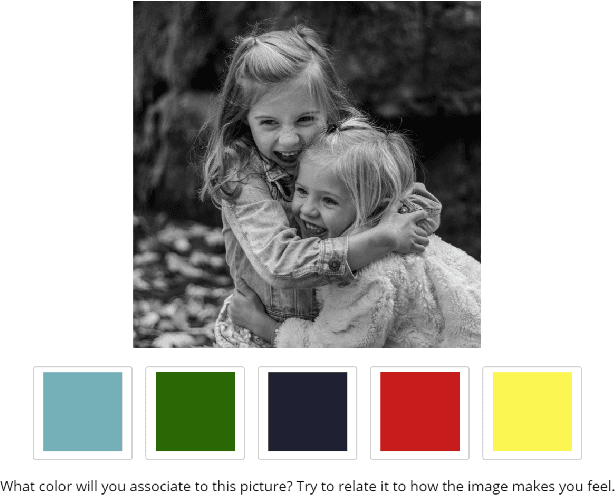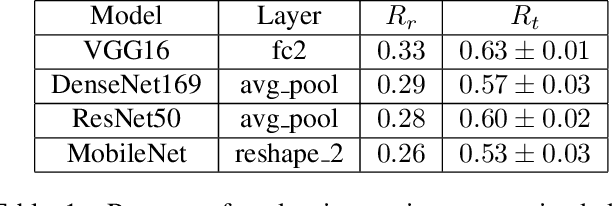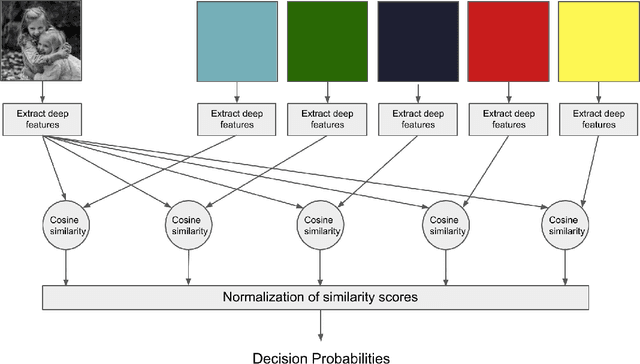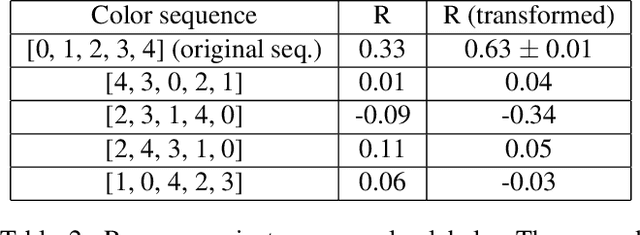Investigating Emotion-Color Association in Deep Neural Networks
Paper and Code
Nov 22, 2020



It has been found that representations learned by Deep Neural Networks (DNNs) correlate very well to neural responses measured in primates' brains and psychological representations exhibited by human similarity judgment. On another hand, past studies have shown that particular colors can be associated with specific emotion arousal in humans. Do deep neural networks also learn this behavior? In this study, we investigate if DNNs can learn implicit associations in stimuli, particularly, an emotion-color association between image stimuli. Our study was conducted in two parts. First, we collected human responses on a forced-choice decision task in which subjects were asked to select a color for a specified emotion-inducing image. Next, we modeled this decision task on neural networks using the similarity between deep representation (extracted using DNNs trained on object classification tasks) of the images and images of colors used in the task. We found that our model showed a fuzzy linear relationship between the two decision probabilities. This results in two interesting findings, 1. The representations learned by deep neural networks can indeed show an emotion-color association 2. The emotion-color association is not just random but involves some cognitive phenomena. Finally, we also show that this method can help us in the emotion classification task, specifically when there are very few examples to train the model. This analysis can be relevant to psychologists studying emotion-color associations and artificial intelligence researchers modeling emotional intelligence in machines or studying representations learned by deep neural networks.
 Add to Chrome
Add to Chrome Add to Firefox
Add to Firefox Add to Edge
Add to Edge